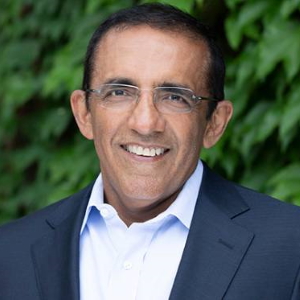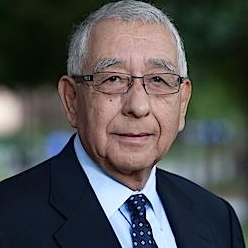Ranjay Gulati Speaker Biography
Harvard Business School Professor, Author and Expert on Leadership, Strategy and Organizational Growth
Ranjay Gulati is the Paul R. Lawrence MBA Class of 1942 Professor and the former Head of the Organizational Behavior Unit at Harvard Business School. Until recently, he chaired the Advanced Management Program, the flagship senior leader executive program, at the school. His work bridges strategy (establishing clear strategic pillars for growth), organizational design (reimagining purposeful and collaborative organizational systems) and leadership (fostering inspired, courageous and caring execution).
Publications
Professor Gulati was ranked as one of the top ten most cited scholars in economics and business for over a decade by ISI-Incite. The Economist, the Financial Times and the Economist Intelligence Unit have listed him among the top handful of business school scholars whose work is most relevant to management practice. His research has been published in leading academic journals of business, the Harvard Business Review and a range of other outlets. He is the author of several books, with his latest, Deep Purpose (Harper Business, February 2022), named to the list of Thinkers50 Top 10 Best New Management Books for 2022. He has also been a frequent guest on CNBC and other prominent media outlets.
Education
Professor Gulati has served on the advisory boards of several entrepreneurial ventures and has appeared as an expert witness in business litigations. He holds a Ph.D. from Harvard University, a master’s degree in Management from M.I.T.’s Sloan School of Management and two Bachelor’s Degrees, in Computer Science and Economics, from Washington State University and St. Stephens College, New Delhi, respectively.
Ranjay Gulati Speaking Topics
WHY DO GREAT COMPANIES DERAIL?
This talk will explore why great companies derail and delineate some of the underlying reasons. We will look at some of the strategic, organizational, and people issues that may drive these outcomes. We will distill lessons for present-day organizations to avoid derailing and pursue market success.
LEVERAGING A CUSTOMER-FOCUSED STRATEGY TO DRIVE GROWTH
Spurred by visions of the future and haunted by intense competition, companies are rushing to realize the goal of creating a customer-focused organization. Despite the increasing need for a customer-focused strategy in a competitive business environment there are few paradigms of how companies can change their strategy and organization to become customer focused. This session presents a roadmap of the stages through which companies evolve as they embark on this journey towards greater market focus. Through a series of cases about firms in a range of industries that have successfully embarked on some of these changes, we will develop a comprehensive blueprint for the market driven organization. Some of the topics discussed will include: • What is a customer driven strategy? • Is a customer driven strategy right for you? • Obstacles to formulating and implementing a customer driven strategy • The road to building a customer driven organization
ACHIEVING EFFICIENCY AND GROWTH
To achieve profitable growth in today’s volatile economy requires becoming more efficient while also driving ever greater value to your customers. Doing “more with less” necessitates learning how to be maniacal about looking at all your activities through the lens of your customers. Through this it becomes easier to then distill where to devote resources and also where to cut back. We will analyze companies in the present context, discuss case studies, and identify how and where you should make changes to the way you think about strategy and resource decisions. Some of the topics discussed will include: • Identify and explore the essential foundations for driving growth through competitive advantage • Examine some of the newest ways to drive greater productivity in a dynamic environment • Investigate how leading firms in a range of industries use creative growth strategies to build and sustain profitable market positions • Cultivate an understanding of how to drive profitable growth by simultaneously pursuing greater efficiency and customer-centered growth through case studies
DIGITAL TRANSFORMATION
We will explore how digital transformation is having a major impact on most industries on both the demand and supply sides of their businesses and will explore each in turn. On the demand side, we will assess how this transformation is reshaping the way organizations engage with their customers and markets not only in what they sell but also how they sell and how they get paid. And on the supply sides, we will examine how it is transforming not only industry supply chains, but also core activities such as R&D and manufacturing. Beyond these two broad arenas, we will also explore how a digital transformation is reshaping firms’ architecture that in turn transforms how they organize and coordinate their own activities. Digitization creates new opportunities for organizing that will be explored and discussed. We will conclude with a discussion of how this transformation is reshaping the activities firms do in-house versus working with partners. The rapid increase of partnerships will be examined with an assessment of their benefits and also pitfalls.
OUTSIDE-IN GROWTH STRATEGIES FOR TURBULENT TIMES
To achieve success in today’s volatile economy is not an easy undertaking. There are few templates or models for sustained success. In this lecture we will explore a truism-customer centricity- to understand its relevance and meaning for organizations today. Most organizations embrace the notion that their customers come first, but few companies can actually deliver on that promise. Those firms seeking to make customer centricity or outside-in thinking into something more than just a catchy corporate slogan, have to confront a number of external and internal challenges. A broad range of hidden obstacles that can limit organizations from achieving their goals will be discussed. Some of these include strategies for bridging internal silos that slow down decision making and foster an internal focus, hiring and developing “T-shaped” managers who can manage both vertically within authority boundaries as well as horizontally across authority boundaries, and overcoming the “knowing-doing gap” whereby we limit our ability to embrace lasting change. We will finally elaborate on the importance of a play-to-win mindset for achieving market success through genuine customer centricity. We will not only define what it means but also discuss strategies that winning sports coaches use to get their teams to become winning teams. Lessons that emerge from this with broader application will be discussed.
DRIVING PROFITABLE GROWTH IN TURBULENT MARKETS
To achieve growth in today’s volatile economy requires leveraging more than just traditional assets. Intangible assets in the form of customer relationship management, branding, organizational design along with traditional assets like property rights have become important pillars of competitive advantage. In the present context, firms are witnessing dramatic shifts in the competitive landscape with intensified competition and increasing commoditization of offerings. Spurred by visions of a dismal future and haunted by intense competition, companies are rushing to cut costs across the board. At the same time there are others who view this time as opportune to break away from the pack. While others are hunkering down, these few are running forward. How do such organizations deal with the seemingly competing sets of demands of cutting back and investing in the future? What do they do to expand while others contract? What tangible and intangible assets do they leverage to drive profitable growth? How do you break through the inevitable trade-off between driving volume growth or maintaining margin in an increasingly competitive marketplace? In this session, we learn to think more creatively about leveraging your tangible and intangible assets as you develop strategies for growth. We will analyze companies in the present context, discuss case studies, and identify how and where you should make changes to the way you think about strategy and resource decisions. Some of the topics discussed will include: • Identify and explore the essential foundations for driving growth through competitive advantage • Examine some of the newest organizational structures and strategies to continually modify those that work best in a dynamic environment • Investigate how leading firms in a range of industries use creative growth strategies to build and sustain profitable market positions • Cultivate an understanding of how to drive growth through case studies • Ranked as one of the top ten most cited scholars in Economics and Business over a decade by ISI-Incite • Listed among the top handful of business school scholars whose work is most relevant to management practice by The Economist, Financial Times, and the Economist Intelligence Unit • Has advised numerous F1000 companies around the world focusing on helping leadership teams enhance the growth trajectory of their businesses





